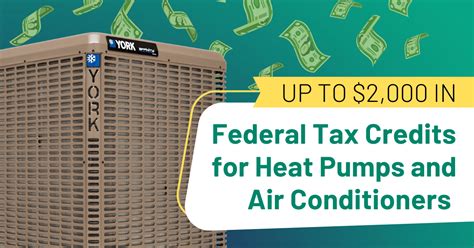Warming Up Your Wallet: Maximize Savings with Heat Pump Tax Rebates
In the current landscape of energy consumption and climate change challenges, finding efficient heating solutions has never been more pertinent. Heat pumps have emerged as one of the most effective means of heating and cooling residential spaces. Not only do they provide significant energy savings, but they also qualify for various tax rebates designed to incentivize homeowners to adopt greener technologies. This article explores how you can maximize your savings through heat pump tax rebates, ultimately warming both your home and your wallet.
The Benefits of Heat Pumps
Heat pumps are highly efficient heating and cooling systems that transfer heat rather than generate it through combustion. They extract heat from the air, ground, or water and move it into or out of your home. This unique mechanism allows heat pumps to achieve efficiencies ranging from 200% to 500%, meaning for every unit of energy consumed, they can deliver multiple units of heating or cooling. This not only minimizes energy bills but also significantly reduces your carbon footprint.
Understanding Tax Rebates for Heat Pumps
Governments around the world are increasingly offering financial incentives for homeowners to install energy-efficient appliances. In the United States, the federal government and many state governments offer tax rebates and credits for heat pump installations. These incentives are designed to encourage homeowners to switch to more sustainable heating and cooling solutions.
For instance, the federal tax credit available under the Energy Star program can cover a significant portion of the cost of purchasing and installing a heat pump. The specifics may vary, but such credits can cover up to 30% of the cost of the system, including installation, making this a financially viable option for many homeowners.
How to Maximize Your Savings
- Research Available Rebates: Start by researching the rebates available in your area. Websites like DSIRE provide comprehensive information about state and local incentive programs.
- Choose the Right System: Not all heat pumps are created equal. Some systems qualify for higher rebates than others. Look for ENERGY STAR rated systems that meet or exceed efficiency standards.
- Consult with Professionals: Hiring a qualified contractor can help ensure that the system is installed correctly and efficiently. They can also provide advice on applicable rebates and specific models that qualify.
- Document Everything: Keep records of your purchase, installation, and any related paperwork. This documentation will be necessary when filing for rebates and tax credits.
- Consider State-Specific Incentives: Many states go beyond federal programs, offering additional rebates on top of federal tax credits. Make sure to check local energy efficiency programs.
Steps to Claim Heat Pump Tax Rebates
- Verify Eligibility: Before purchasing, verify that the heat pump you are interested in meets the necessary efficiency standards to qualify for tax credits.
- Install the System: Hire a qualified contractor and schedule the installation. Ensure that they are aware of the rebate programs available to you.
- Gather Documentation: After installation, gather all relevant documentation including receipts, warranty information, and any other necessary paperwork.
- File Your Taxes: Consult with a tax advisor or use tax software to include the applicable tax credits when you file your return. Be prepared to submit documentation if required.
Conclusion
Investing in a heat pump is not only a step towards a more energy-efficient and sustainable home, but it also comes with significant financial benefits. By taking advantage of tax rebates and local incentives, homeowners can significantly reduce the initial investment cost, leading to long-term savings on energy bills. As you consider upgrading your home’s heating system, be sure to research the options available to you and take full advantage of the savings potential. Warming up your wallet through heat pump tax rebates is a smart financial move that contributes to a greener planet while keeping you comfortable year-round.
FAQs
1. What types of heat pumps qualify for tax rebates?
Typically, both air-source and ground-source (geothermal) heat pumps qualify for tax rebates. However, it’s essential to check specific eligibility criteria for the programs in your state or locality.
2. How do I find out about local tax rebates?
You can visit websites like DSIRE for a comprehensive list of available incentives and rebates in your area. Additionally, your local utility company may offer programs or incentives.
3. Are there any limits to the amount I can claim for heat pump installations?
Limits may vary by program. The federal tax credit generally allows homeowners to claim up to 30% of the installation costs, while state programs may have different maximum amounts or conditions.
4. Do I need to keep specific documentation to claim my rebate?
Yes, you should keep receipts, installation documentation, and any relevant paperwork that details the heat pump’s specifications, as you may need to submit them when claiming rebates or credits.
5. Can I claim a rebate if I have previously installed a heat pump?
Rebates typically apply to new installations. However, check with your local rebate program for specific rules regarding qualifying installations that were done in the past.
Download Tax Rebates For Heat Pumps
